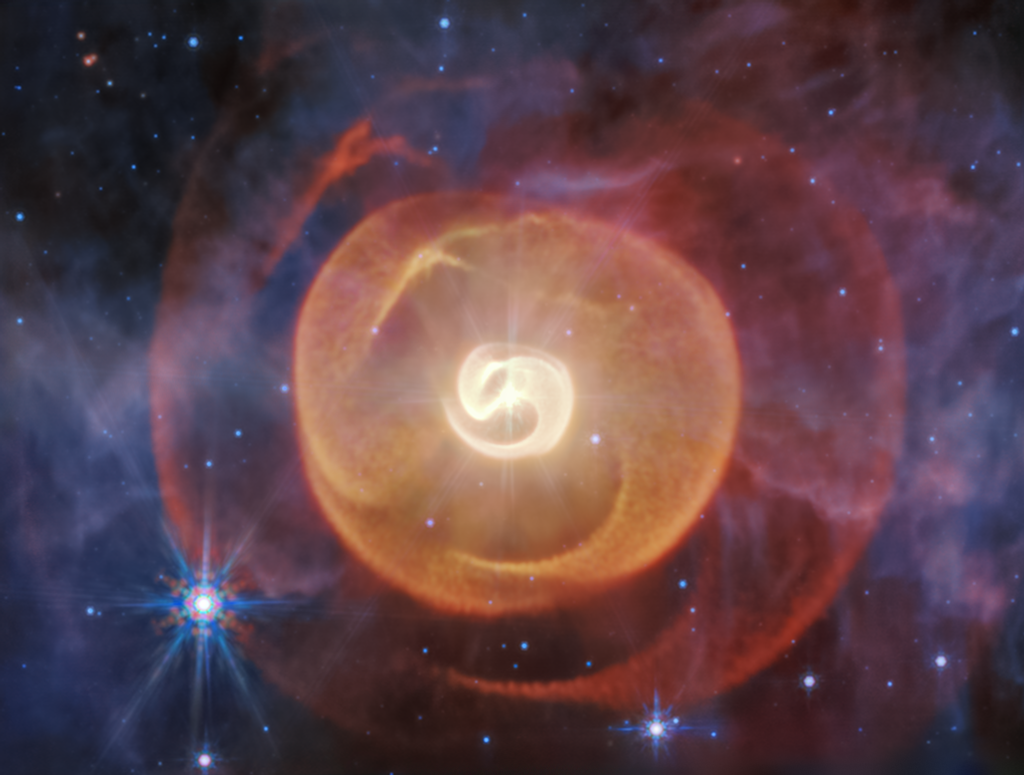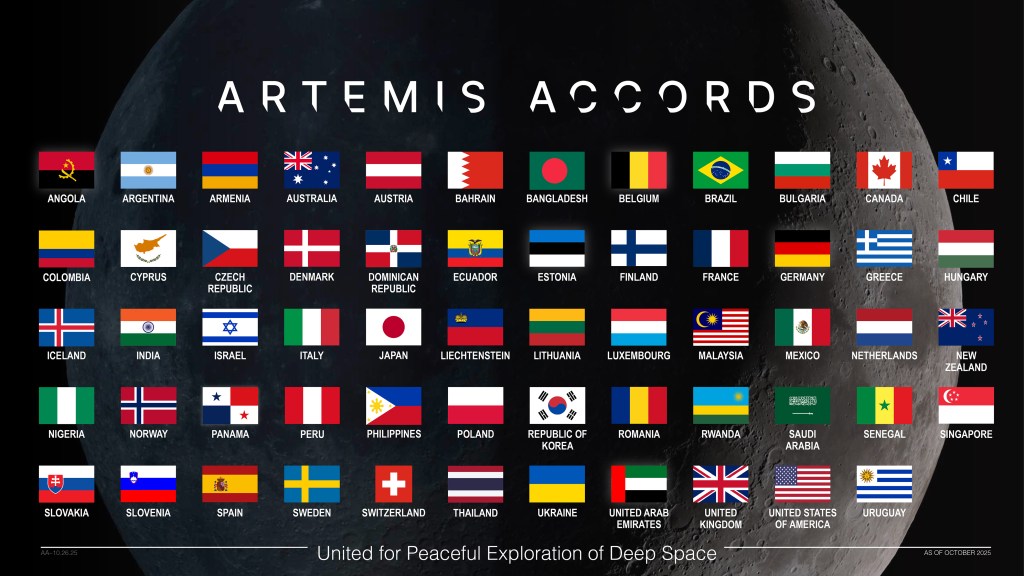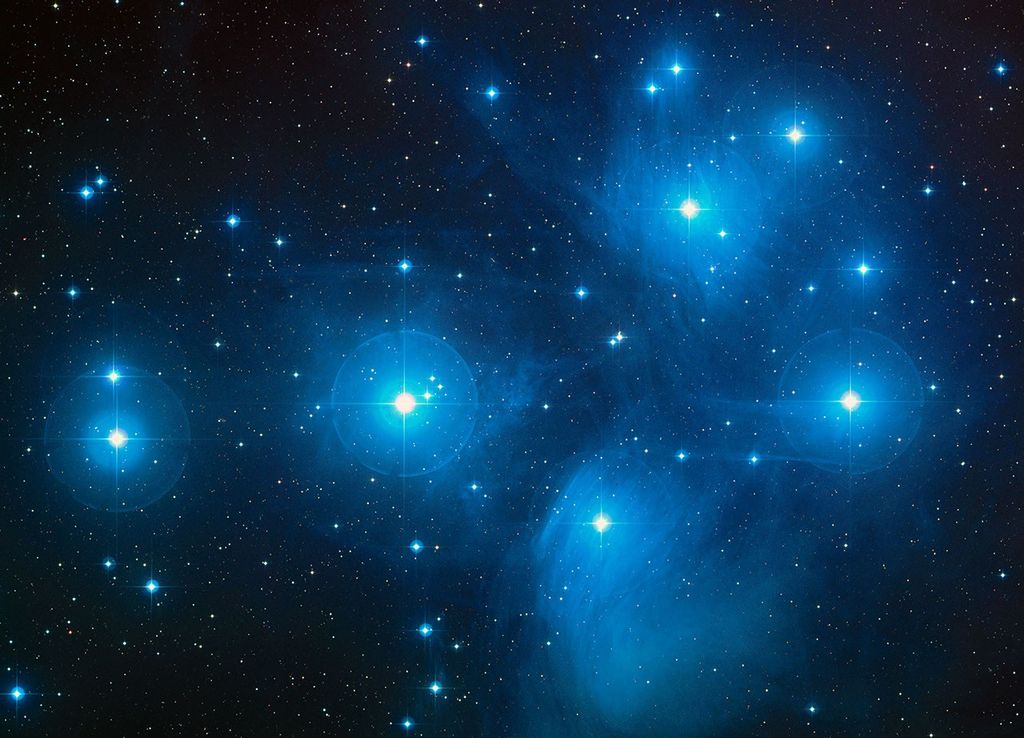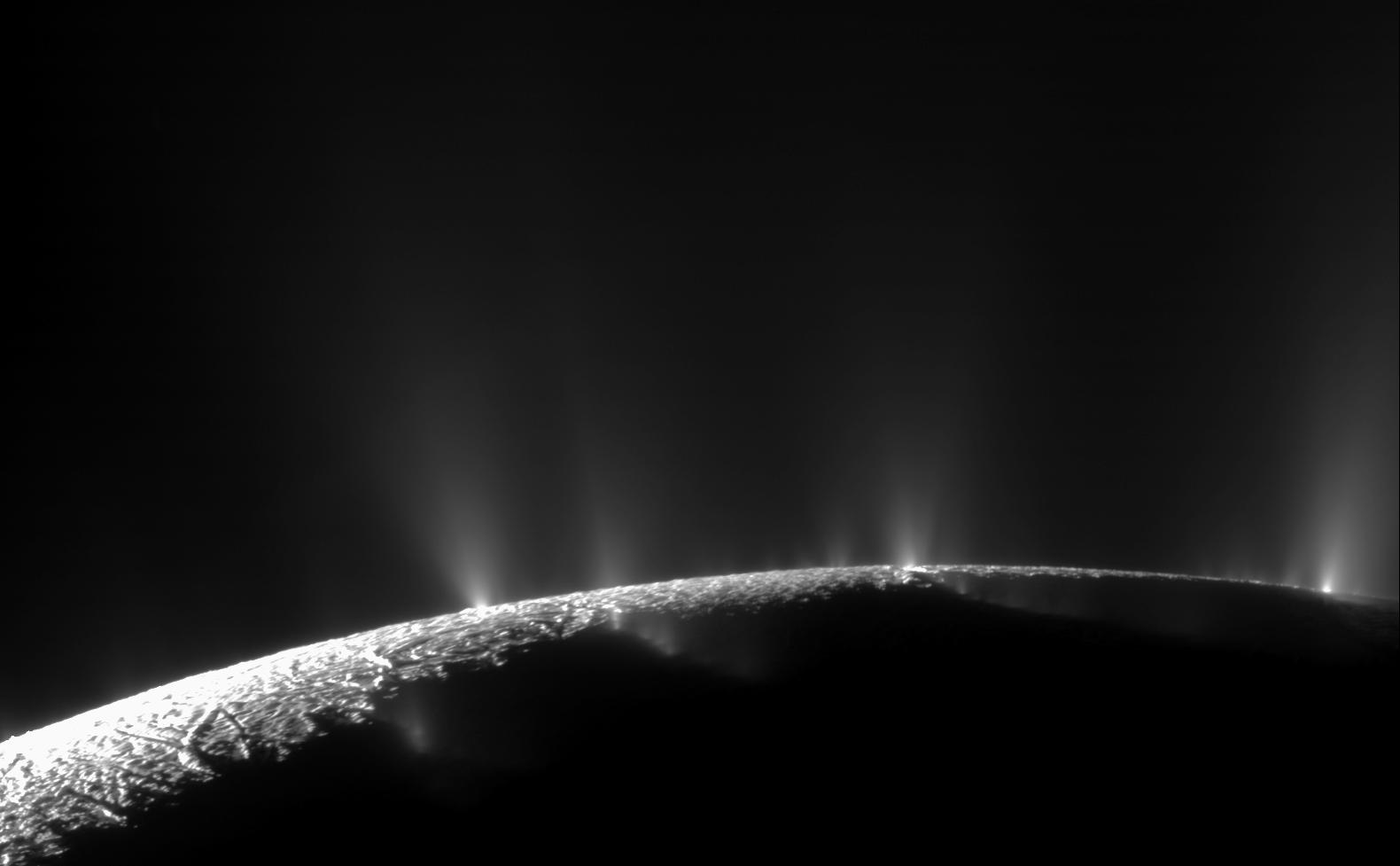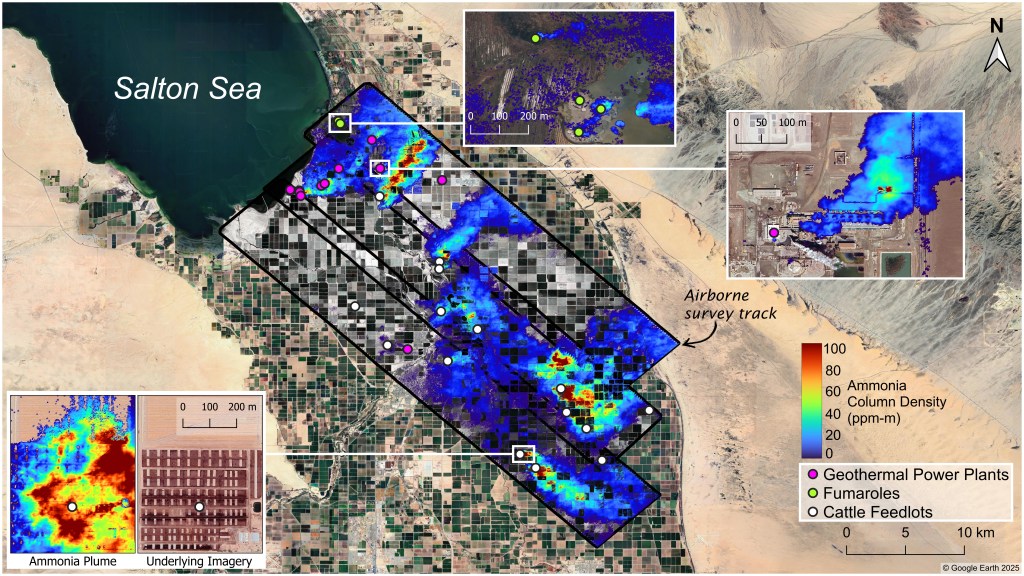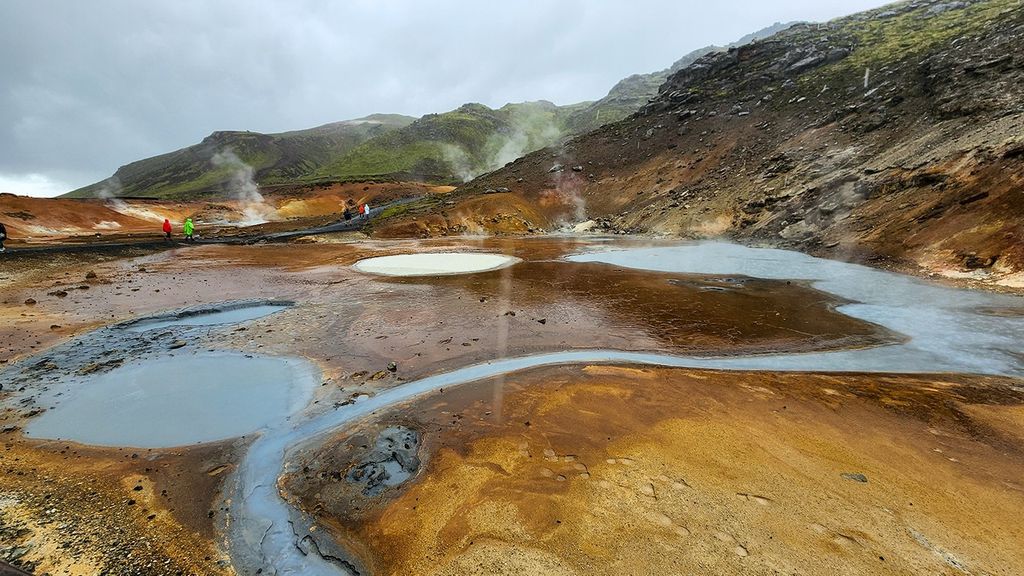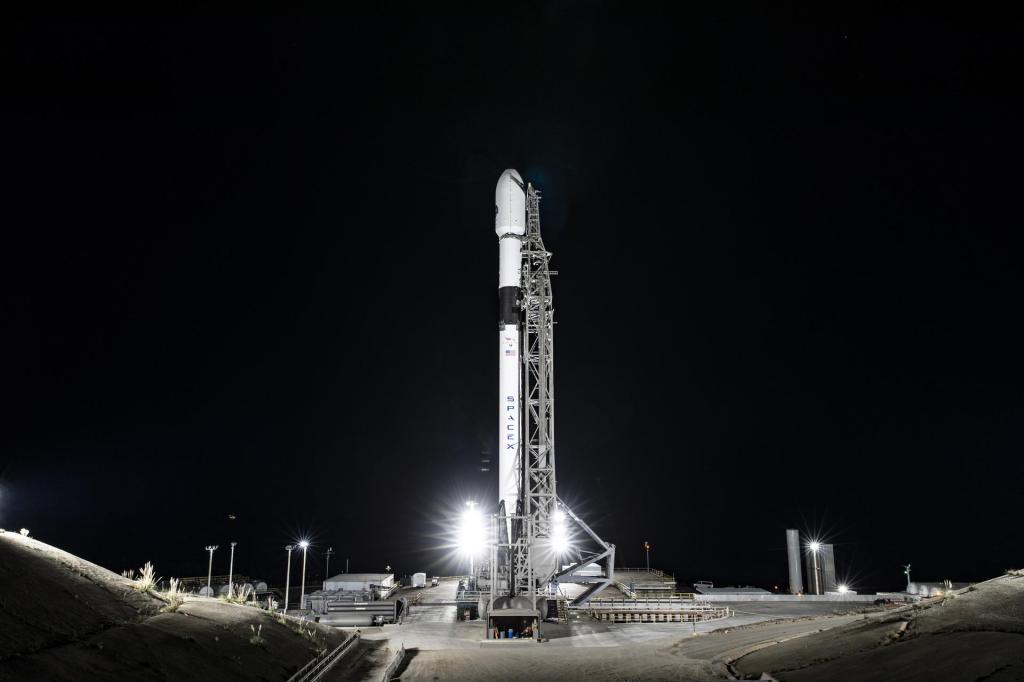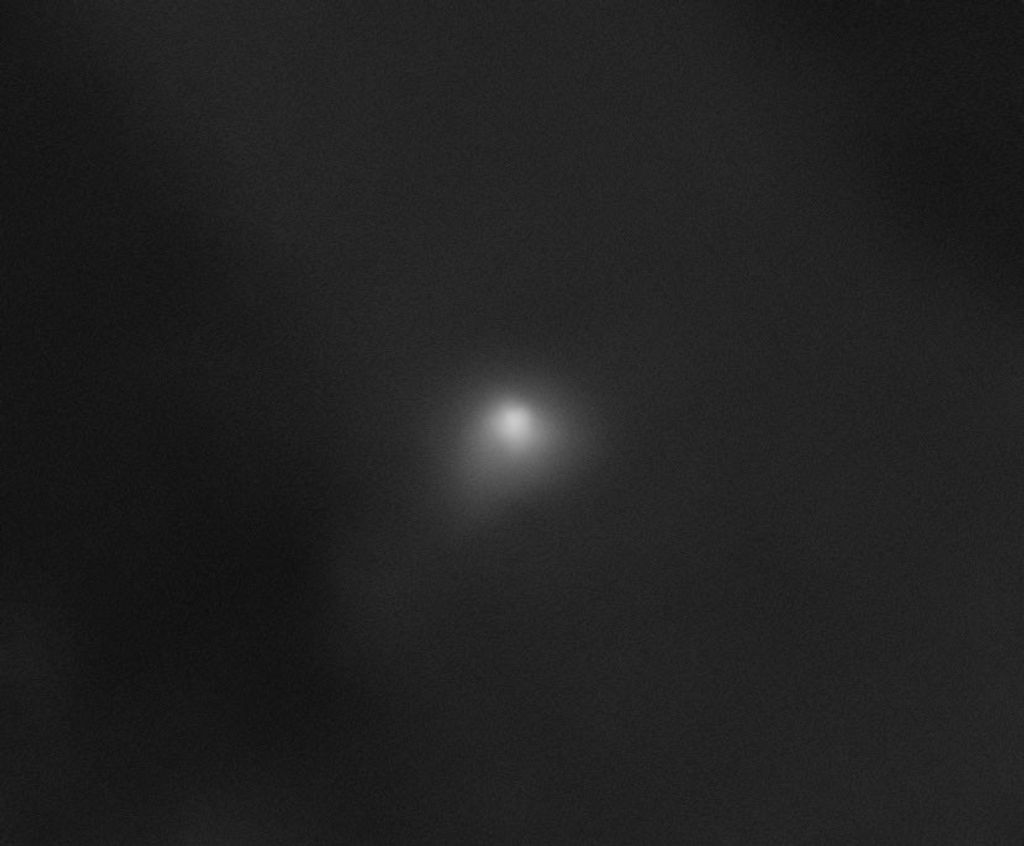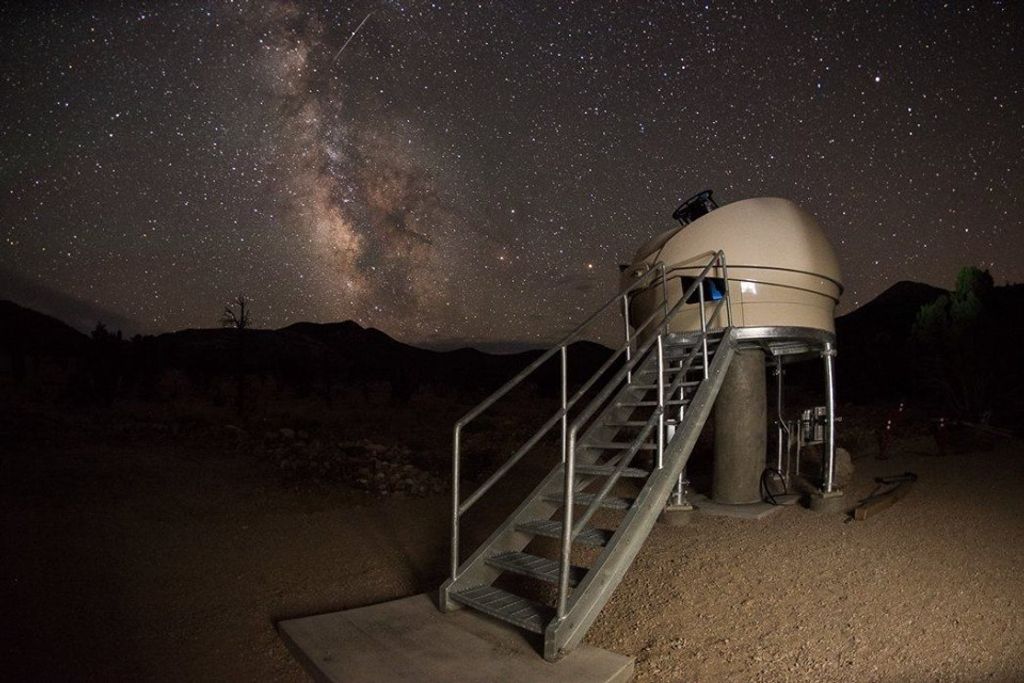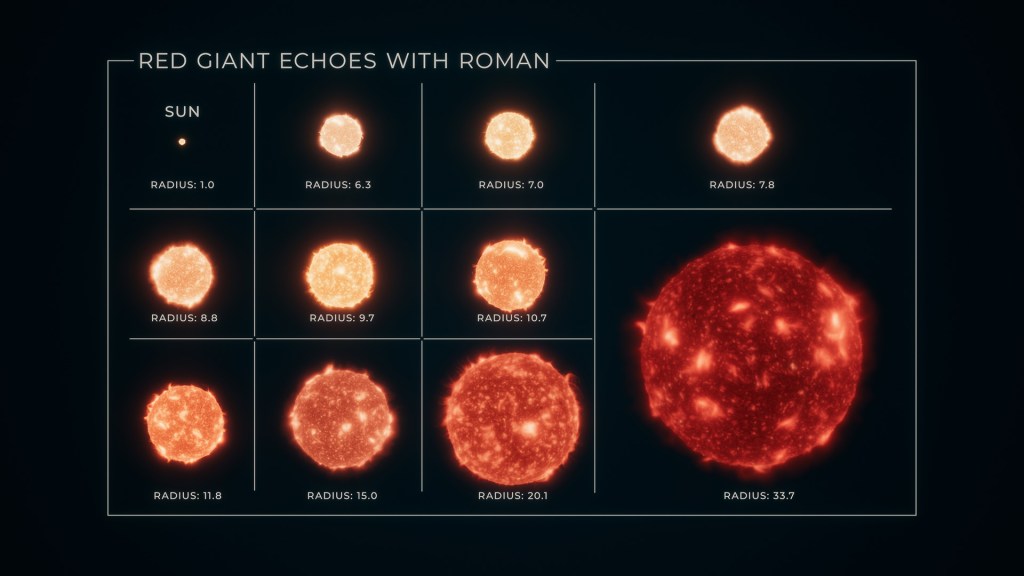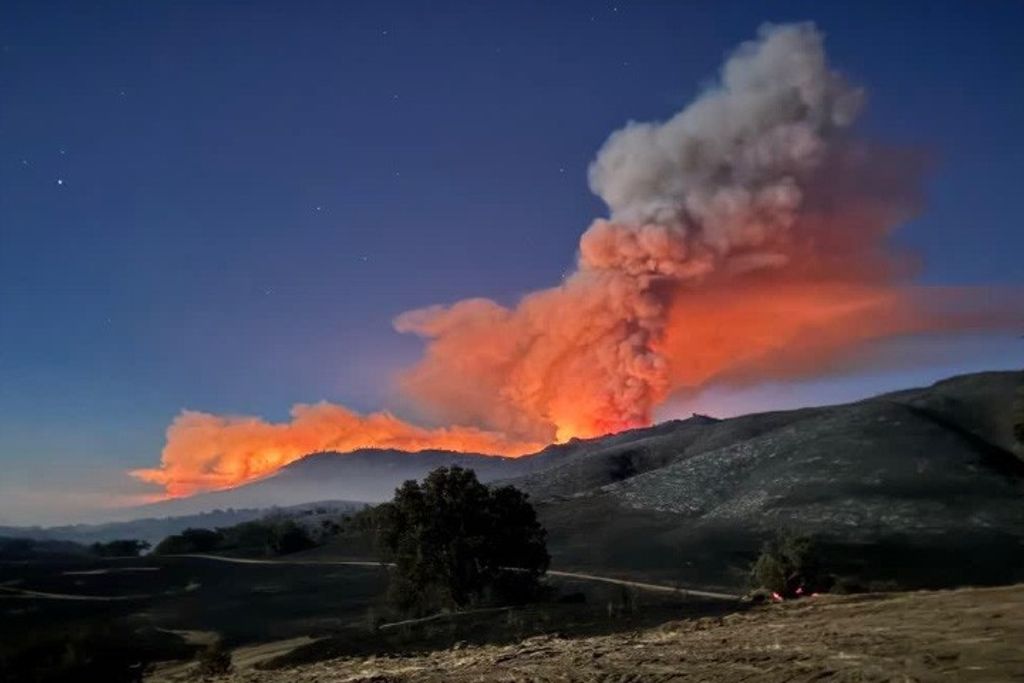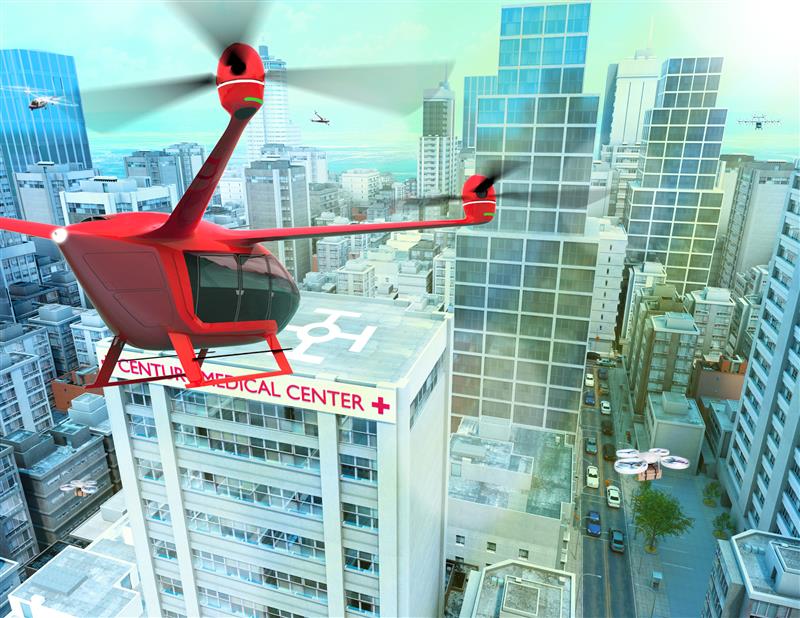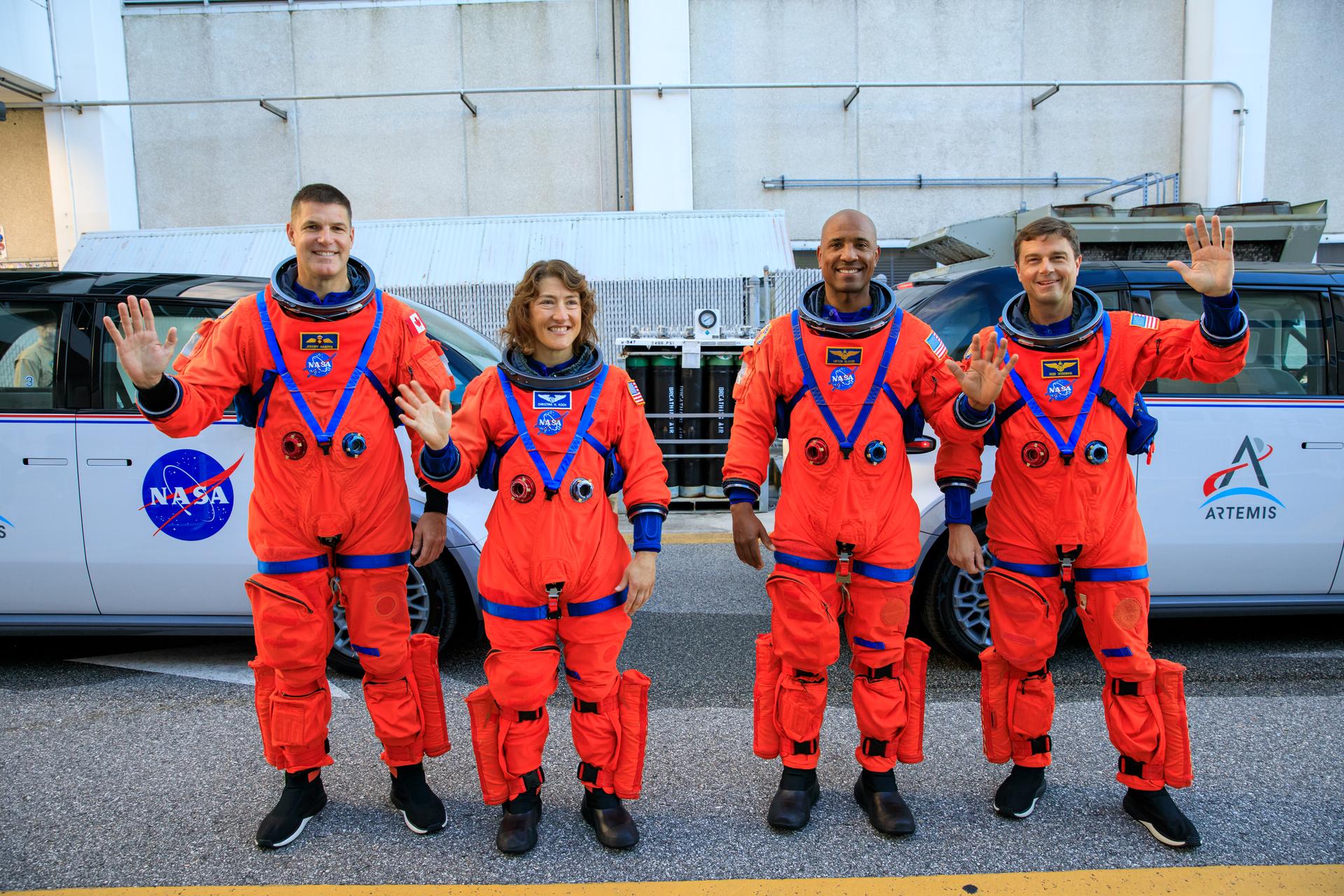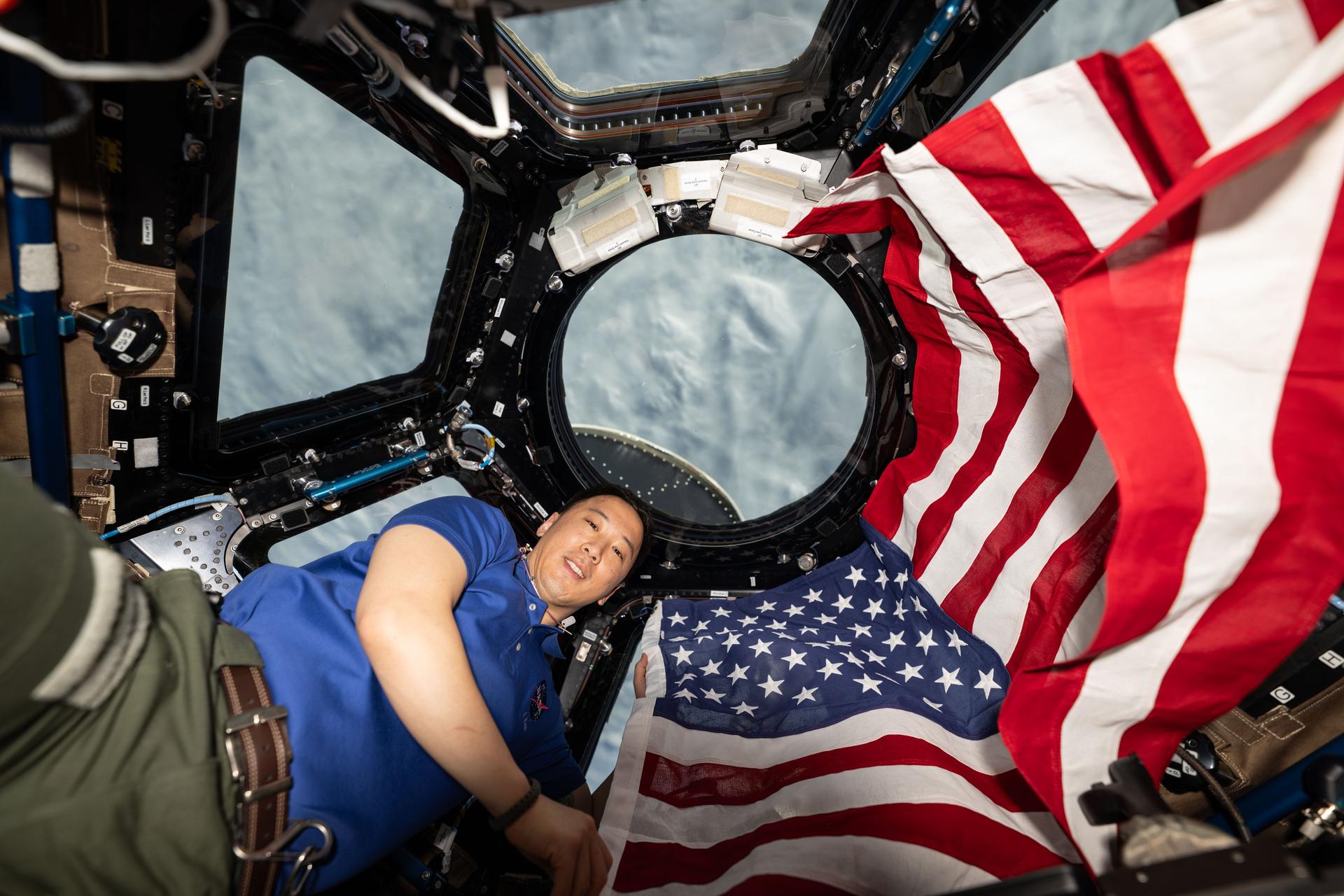Episode description:
The Moon’s South Pole is a bizarre landscape. Mountain ridges glow in perpetual sunlight while deep craters freeze in billion-year-old shade. Yet hidden in the depths of those shadowed craters, under temperatures almost three times colder than the frostiest day in Antarctica, lurks something familiar–water ice. In the future, that ice could sustain human explorers or be broken apart into hydrogen and oxygen to refuel rockets. Join Brett Denevi, Artemis III geology team lead, to learn why NASA plans to land astronauts on the Moon’s South Pole later this decade. Then with Michelle Munk, NASA space technology chief architect, meet the robot Moon landers scouting ahead of Artemis which will drill beneath the regolith and test technologies designed to help future human explorers survive the Pole’s extreme conditions.

[MUSIC: Steiner in Pyjamas by Hooper]
[SFX: Whooshing, sizzling fire]
BRETT DENEVI: So, if we were standing at the South Pole, maybe on the rim of a crater or some other peak, I think the first thing we would notice is the Sun is not just going nicely overhead, it is kind of circling the horizon. // Maybe occasionally it dips below or behind a peak, but it’s always going to be this pretty extreme lighting.
HOST JACOB PINTER: This is Brett Denevi.
She’s a planetary geologist. And she’s based at the Applied Physics Lab at Johns Hopkins University.
BRETT: And so that means some of the areas like these peaks, you’re going to be in sunlight for a lot of the time. // And then if you look down into maybe Shackleton Crater, right near the South Pole, it’s going to be dark, and it will have been dark for potentially billions of years, because the sunlight is never going to make it down in there.
JACOB: As you may have figured out… we’re not talking about our Earthly South Pole, in Antarctica.
We’re talking about a South Pole almost a quarter of a million miles away.
The one on the Moon.
As we orbit the Sun, the South Pole here on Earth sees nothing but darkness for half the year.
The other half is nothing but daylight.
That’s because our planet is tilted on its axis. But the Moon orbits Earth almost straight up and down.
That causes this bizarre lighting at the Moon’s South Pole.
You’d see mountain peaks illuminated by an almost perpetual sunset glow… and craters freezing in permanent shadow.
[SFX: Whooshing wind]
BRETT: And so that’s kind of the key defining, like environmental feature of the South Pole. These areas of bright and areas of dark. In these cold areas, some of them get down to temperatures that are always colder than Pluto for example. They’re so cold that they may be able to trap water ice for long, long periods of time.
JACOB: It turns out the Moon’s dry, desolate South Pole is hiding a big secret.
A feature it shares with our own South Pole… frozen… water.
And now… NASA wants to find it.
[MUSIC: Curiosity by SYSTEM Sounds]
JACOB: This is NASA’s Curious Universe. I’m your host, Jacob Pinter.
Ice on the Moon has NASA scientists’ imaginations running wild.
Future lunar explorers could melt it and drink it.
They could break up that H-2-O into hydrogen and oxygen. Then, they could use it for breathable air, or even to make rocket fuel.
It sounds like sci-fi. But NASA is working to make it a reality.
The Artemis program is preparing to send astronauts back to the Moon.
The crew of Artemis Three will not only leave the first human footprints on the Moon in more than 50 years. They’ll be the first people ever to explore the Moon’s South Pole.
In the meantime, we’re sending robotic explorers as scouts. These robot landers are testing new technologies to help humans stay safe in extreme polar conditions.
So, today, … we’re flying you to the Moon… to learn why NASA is so obsessed with the frigid lunar South Pole… and what it takes to land there… and survive.
[MUSIC: Processing Information by Harms]
JACOB: For thousands of years, people have looked up at the full Moon and seen… a face.
You know, the “man in the Moon”.
And even if you don’t see a face… you can at least notice splotches of dark-colored rock that contrast some lighter gray areas.
Those different shades of gray tell the story of how the Moon formed.
Billions of years ago, something really big crashed into Earth.
[SFX: Explosion]
Like, something about the size of Mars.
The debris from that impact swirled around in our orbit, until it fused into a baby Moon. At that point, Brett says the Moon’s surface was a roiling ocean of bubbling magma.
[SFX: Bubbling]
BRETT: It’s geologically pretty slow moving today, but it was once a pretty exciting place, with literal rivers of lava flowing and carving out channels…
[SFX: Explosive impacts]
BRETT: Huge eruptions of explosive volcanic deposits, and then, of course, like giant impact events. So it used to be a pretty cool place.
JACOB: Over millions of years, that magma cooled into solid rock.
But different parts cooled at different speeds.
That’s how we got some rock that’s lighter… and some that’s darker.
The light, dusty highlands near the poles solidified first. Volcanic eruptions continued elsewhere… spewing dark lava across the Moon’s nearside, close to the equator.
When NASA first set out to land astronauts on the Moon in the 1960s, we mostly explored those younger, dried-up lava seas near the equator.
On the Moon, those seas are called mares. MARIA.
Compared to the mountainous South Pole, they’re pretty flat… a relatively easy spot to land a spacecraft.
[ARCHIVAL Apollo 11 Broadcast: Houston, Tranquility Base here. The Eagle has landed.]
Apollo astronauts landed at the Moon’s equator six different times.
And when they came home … they brought back more than 800 pounds of Moon rocks and dirt.
That material has been crucial for geologists to understand the Moon’s more exciting past.
The Moon’s last volcanoes mostly sputtered out a couple billion years ago, and the Moon has sat pretty much unchanged.
On Earth, we have water constantly changing the surface. But not on the Moon.
In fact, scientists can use the Moon as a time capsule to understand how our own planet formed.
Y’know, back before annoying things like “erosion” and “life” got in the way.
The Moon samples we do have are helpful. But they’re limited.
All of the Apollo missions landed in the same small patch of the Moon’s surface.
BRETT: The worst misconception about the Moon is that we’ve been there and so we totally understand it. Great. Let’s check that off the list. We’re done. And so it’s kind of like, you know, visiting one teeny, tiny spot on Earth and being like, All right, we’re good. We understand it. It’s like, no, there’s so much more to learn from the Moon.
JACOB: The rocks Apollo astronauts brought home were mostly those younger, darker volcanic rocks… and they only tell us a part of the Moon’s story.
It’s like if you went to one country, picked up a rock, and assumed rocks everywhere on Earth were the same.
The South Pole has rocks that are lighter colored… and older. Scientists think those rocks can tell us a lot more of the Moon’s story.
That’s why geologists in particular are so excited for NASA to return to the Moon… and especially to someplace totally new… the mountainous, ancient South Pole.
[MUSIC: The Process by Harms]
JACOB: To prepare for an astronaut landing… NASA does a lot of recon.
Back in the ‘60s… we sent early probes to take photos of the Moon’s surface … with some tools that sound pretty low-tech today.
BRETT: They would take polaroid strips and develop each polaroid strip on the spacecraft and scan it and send it back. And so when you look at the images now, they’re like these little stripey kind of assembled pictures of the Moon, but they’re really high resolution, because their job was to find sites for the Apollo astronauts to land. So they had to be able to see things like a boulder that would, you know, be a hazard for the spacecraft
JACOB: When Brett first started studying the Moon in the early 2000s, that early imagery was all scientists had to work with. She would print out images and paste them into mosaics on her wall at home.
But for a 21st Century Moon mission… We need 21st Century images.
In 2009, NASA launched a spacecraft called LRO: the Lunar Reconnaissance Orbiter.
[ARCHIVAL LRO Launch Broadcast: Main engine ignition, and liftoff of the Atlas V rocket with LRO/LCROSS. America’s first step of a lasting return to the Moon.]
JACOB: And we chose Brett as one of the senior scientists in charge of the spacecraft’s camera.
Suffice to say, LRO’s cameras are an upgrade from those old Polaroid strips.
They’re so good, you can even make out the tracks left behind by the rovers apollo astronauts used to drive around the surface.
But LRO does more than take photos.
It has an instrument that can detect the presence of hydrogen on the Moon’s surface from space.
… which is critical, since hydrogen is one of the two elements that make up water.
The good news is… LRO does detect hydrogen!
The bad news is… the data we have aren’t super precise.
BRETT: So imagine you like, are looking at the pole from orbit, and then you blur your vision even more // you have measurements of hydrogen abundance, but they’re very broad regional measurements.
JACOB: LRO has confirmed that the Moon does have water ice.
[MUSIC: The Circle of Life by Harms]
JACOB: Now, if you’re picturing a massive ice sheet, like Antarctica … with penguins swimming around … I want to temper your expectations a bit.
BRETT: I think it’s safe to say there’s probably not massive, like ice skating rink, kinds of ice deposits on the moon. // 23:30 but it may be in much, you know, smaller, finer deposits, in relatively small abundances scattered throughout these polar areas, there might be some permanently shadowed areas that have more ice and some have less, but we don’t know how long the ice has been there, what its origin is really, what its form is, how abundant it is.
JACOB: The ice hiding in those shadowy craters could be right on the surface, like the frost you see first thing in the morning…
or it could be in big chunks, buried dozens of feet deep.
Brett has been looking for a slam dunk answer. But she hasn’t found one yet.
BRETT: And the attempt at the slam dunk was actually like a real slam. Was the LCROSS experiment.
[ARCHIVAL LCROSS Broadcast: We’re watching the remaining few seconds of the LCROSS mission, as we approach very rapidly the surface of the Cabeus Crater.]
BRETT: Where NASA, just like chucked the upper stage of a Centaur rocket into a permanently shadowed region to see what would happen…
[ARCHIVAL LCROSS Broadcast: All stations Flight, 60 seconds to Centaur impact.]
BRETT: …and watched the ejecta plume that came out of there, and found some evidence for ice, at least in that one spot, there was about 5% water seen in the ejecta that came out of that crater.
[ARCHIVAL LCROSS Broadcast: We should be looking for some signs of the impact on the left side of the shadow right below the dimpled crater on the larger crater rim.]
JACOB: Ultimately, we may want to use that ice for drinking, breathing or refueling rockets.
But first we’ll have to get it out of the regolith … which is the technical word for the Moon’s soil.
And we can’t do that until we know exactly how much ice there is… and how deeply it’s buried.
BRETT: We don’t know how far below the surface that ice is concentrated, if you’re trying to study it, and it’s all buried under 20 meters of regolith that makes things more complicated. There’s a lot we don’t know yet, and we won’t know until we actually get on the surface and start making higher resolution measurements and bringing materials back from the moon to analyze them in the laboratory.
JACOB: But Brett isn’t as interested in using that ice.. She’s a scientist. Like the South Pole’s rocks, she wants to study it, to learn more about our own place in the universe.
BRETT: The reasons that I care about the ice on the moon, I’m just more interested in how did it get there? Was it delivered by comets? Was it delivered by asteroid impacts? Asteroids have some water molecules in them too…
[MUSIC: Desolate Surroundings by Slater]
JACOB: So, imagine that long, long ago… an icy comet crashed into the moon’s equator—the same general area where the Apollo astronauts landed.
[SFX: Comet flies by, crashes into the Moon]
JACOB: But today, the water we see is tucked away in these shadowy craters at the poles.
How did it get there?
BRETT: I mean, so the reason that water gets stuck in these permanently shadowed regions at the poles is because they’re cold traps. They’re so cold that if a water molecule finds its way in there, it’s just stuck. It’s not going to ever evaporate or make it out. But on the rest of the moon, you have these daily temperature cycles.
JACOB: Because of the way the Moon orbits the Earth, At the Moon’s equator… you get 14 straight days of sunlight. Then,14 days of night.
And the temperature can swing wildly between day and night… from more than 250 degrees Fahrenheit, to almost minus 300 degrees Fahrenheit.
BRETT: So you’re heating up a lot, but then you have a lot of time to cool down, and no atmosphere to help insulate.
[SFX: Dripping sounds]
BRETT: So you can get areas that are cold and maybe water is stable on the surface temporarily at night, but then as the Sun rises, it rapidly heats up the surface, and that water molecule is going to start bouncing around trying to find a new place that it is stable.
[SFX: Bouncing ball]
BRETT: So eventually, maybe it’ll make it to somewhere it’s permanently stable, like, like the poles, or maybe it’ll keep bouncing around in this kind of water cycle on the Moon.
JACOB: The more we learn about the Moon, the more we learn about ourselves.
Scientists don’t know how Earth first got water. And solving the mystery of how the Moon got its water could help us unravel the origin of water here on Earth, too.
BRETT: Earth has a lot of water for being so close to the sun, and so was some of Earth’s water delivered after it formed by comets and icy bodies coming from the outer solar system? Things are so mixed up and churned on the earth that that’s hard to answer here, but if we have ancient ice deposits on the moon, we can use the composition of those deposits to understand where they came from.
JACOB: The Earth and the Moon are two bodies in space, closely bound. And the Moon is a precious way to look into our own past.
JACOB: Even though we’ve learned a lot about the Moon’s South Pole… there’s no substitute for sending human explorers to look for themselves.
BRETT: We don’t know what the ice on the moon is like, because we have not been anywhere on the ground, you know, scuffed our boots on the regolith to see what’s in there, and dig down a bit and look to see what form that ice is in. We have so far really only tackled this problem from kind of far away, mostly from orbit.
JACOB: Brett won’t be scuffing her own boots on the Moon’s surface.
But she gets to do the next best thing.
She was chosen to be the top geologist for Artemis III … humanity’s return to the Moon.
[MUSIC: Caught in Space by Rizzo]
BRETT: How my daughter explains what I do. I’ve heard her tell her friends my mom looks at moon rocks and she’s going to tell astronauts what moon rocks to pick up. But, yeah, that’s my like. That’s her more succinct version.
JACOB: From mission control, Brett will direct Artemis astronauts on the Moon to gather samples.
Scientists hope those samples will shed light on four big questions:
How did the Moon form?
How have impacts shaped its surface?
How has its regolith evolved?
And what does its ice look like?
Brett is already practicing with astronauts.
They’re going on virtual reality lunar excursions. And she’s guided them on rehearsal missions in Moon-like terrain in Arizona.
BRETT: I am really curious about what it will be like for the Artemis III astronauts when they step onto the surface in that weird South Pole environment, I’m really, like, more than curious. I’m dying to know what kinds of rocks they’re going to bring back. How right we were, how wrong we were with some of our predictions, and I’m really curious to see how our lunar exploration and science will evolve as we continue to work through the Artemis mission. We’re just kind of taking the first baby steps again of exploration of the moon.
JACOB: At NASA… every small step… and every giant leap… is made possible by planning, practice, and more planning.
So, before we send astronauts to leave footprints at the Moon’s South Pole… we have a scout team of robots making their own mark.
MICHELLE MUNK: Really learning from these robotic missions is what excites me too. How can we make that human mission more successful from the data we can get back now.
JACOB: That’s Michelle Munk.
She’s NASA’s Chief Architect for the Space Technology Mission Directorate.
Michelle is hard at work on an upcoming robotic lander mission called IM-2, a collaboration between NASA and the private company Intuitive Machines.
In early 2025, IM-2 will launch to the Moon’s South Pole.
MICHELLE: We really call this a Space Technology Mission, because it is filled with space technology demonstrations, and we’re really excited about that, and it’s so really groundbreaking for the future of our technology deployment on the Moon.
JACOB: IM-2’s key technology demonstration is a tool called “Prime 1”.
It’s a drill specially designed to penetrate three feet deep and collect a sample of lunar regolith.
MICHELLE: So Prime 1 is a really key demonstration of drilling into the lunar surface and looking for elements that we could use in the future. Water, ice, oxygen or hydrogen, to make rocket fuel or water or breathable atmosphere. The technology of being able to get through this unknown surface, deal with the materials and then be able to make valid scientific measurements has been really interesting and has been a great challenge for the team.
[MUSIC: Manifest by Niblett]
JACOB: In the future, Artemis astronauts could use a similar drill. So, to get ready for primetime, Michelle’s team has tested the drill in all kinds of ways:
They’ve flown it on high-altitude flights to simulate lunar gravity.
They’ve run it through special chambers that mimic the Moon’s thin, almost nonexistent atmosphere… and create extreme temperatures.
They’ve even tried it on simulated lunar regolith with all the properties of the real thing.
Besides the drill… IM-2 also carries another, smaller robot. It’s got this tiny rocket engine that it’ll use to jump out of the lander and hop into craters to explore them. In fact, it’s called the “Micro-Nova hopper.”
The little hopper will communicate with its lander by testing the first 4G/LTE cellular network on the Moon, designed by Nokia.
When Artemis astronauts land, they’ll need the bandwidth to send photos and video back to mission control… and to navigate the surface.
MICHELLE: We’re all so spoiled here on earth with our pocket super computers and Google Maps to tell us where we are and where we’re going. You know, it’s a little bit daunting to think about not having that support system in a new location like the moon.
JACOB: Another tiny, wheeled rover will also drive out of the lander and take the first 3D images of the Moon’s surface. And it’ll beam those back to the lander through that same cellular network.
But for all those technology tests to work, IM-2 has to land on the surface safely… and that’s up to our partner, Intuitive Machines.
MICHELLE: We kind of think of it as the FedEx service to the moon. And so we put our experiments on the truck, and we don’t ask what kind of engine the truck has or how it actually navigates to where it’s going, so much as we just like to get our data back from the moon.
JACOB: This is part of an initiative that NASA calls “Commercial Lunar Payload Services”.
We’re partnering with several American companies to take on routine launches of science instruments and tech demonstrations to the Moon.
The “truck” here is a cylinder with eight sides and six legs. It’s a little bit taller than a basketball hoop. And it’s named… Athena.
MICHELLE: So this commercially led approach comes with some risk, but it also comes with a lot of economic advantages, both in cost savings to the government, but also in supporting the broader space economy.
JACOB: That means more money and time for NASA to focus on the harder stuff… like landing humans on the Moon and Mars, and sending robot explorers deeper into the solar system.
If you’ve been keeping an eye on space news, you’ve probably seen that in recent years, lunar landers from Russia, China and India have crashed into the Moon while attempting landings.
Other landers have made it. But the point is, just because NASA has been to the Moon before… doesn’t mean it’s an easy place to go back. And the extreme South Pole is an especially hard place to land.
Intuitive Machines has tried this once before too. IM-1 landed on the Moon in 2024, but immediately tipped over.
[ARCHIVAL IM-1 Landing Broadcast: Tense moments inside of mission control with the most qualified folks… we’re picking up a signal from our high gain antenna and transmitter. It’s faint, but it’s there. So stand by folks, we’ll see what’s happening here.]
JACOB: But! NASA still got some good science results. And every attempt teaches us new lessons we can use for next time.
MICHELLE: We’re excited about the opportunity to refly that system and use the lessons learned of Intuitive Machines from the first one. And I know they’re all in on making that landing successful. So, second time. You know, you have a lot more benefits from doing it once before.
JACOB: Michelle Munk’s background is in entry, descent and landing technologies… all the engineering that goes into landing a spacecraft safely on another planet.
In fact, she worked on the heat shield that let the Curiosity and Perseverance rovers land safely on Mars!
So, she offered to walk us through IM-2’s upcoming journey, from launch to landing.
[MUSIC: Nebula by Doherty]
JACOB: So let’s go. Please keep your hands and feet inside the rocket at all times.
Step 1: take off.
[ARCHIVAL IM-1 Launch Broadcast: 10, 9, 8…]
JACOB: In the grand scheme, launching from Earth is pretty routine at this point… NASA, private companies, and other space agencies do it all the time.
[ARCHIVAL IM-1 Launch Broadcast: Ignition and liftoff. Go SpaceX, Go IM-1 and the Odysseus Lunar Lander.]
JACOB: Step 2, you need a big propulsive maneuver to get the spacecraft out of Earth’s orbit and on course to the Moon.
[ARCHIVAL IM-1 Launch Broadcast: IM-1 Odysseus Lunar Lander separation confirmed. What an incredible sight to see. The IM-1 Nova-C lunar lander drifting away from Falcon 9’s second stage right before it begins its 8-day journey to the Moon.]
JACOB: But Step 3 is especially tricky. Landing. You only get one shot at getting it right.
MICHELLE: That’s one of the things that makes descent and landing at any destination particularly intriguing for me is that there’s really no viable abort scenario. Once you’re on your way, you are not stopping. You’re going to land there, either safely or not. So it’s a very difficult problem, no matter who you are and how many times you’ve done it.
JACOB: In the Moon’s orbit, you wait for the right lighting conditions.
[ARCHIVAL IM-1 Landing Broadcast: Over the last 24 hours, Odysseus has maintained its trajectory in low lunar orbit, waiting for suitable lighting conditions to begin its autonomous descent near the South Pole of the Moon.]
JACOB: The spacecraft also needs Earth to be in view so that it can communicate. Then, you burn your engine to send your spacecraft toward the surface.
[ARCHIVAL IM-1 Landing Broadcast: The lander is continuing to decrease its altitude until the powered descent initiation, an 11-minute braking burn that sets Nova-C up for the final moments prior to touchdown.]
JACOB: The spacecraft uses its cameras to look at the landing site. It has to compare what it’s seeing to the images it has from LRO in real time.
MICHELLE: So it’s kind of like, you know, you have a picture that you’ve been looking at, you’ve picked your landing site, and you know that there’s a crater here and a boulder there, and then when you’re approaching the surface, if you take similar pictures of that area, you can pinpoint those landmarks and kind of know better where your vehicle is compared to those. And that really helps.
JACOB: Since the Moon doesn’t have much of an atmosphere, parachutes are no good.
You have to use rockets.
MICHELLE: And so that’s the tricky part, everything has to go well. It has to be well planned in terms of, when you turn your engines on, you want to get rid of all your horizontal motion so that you’re just coming down vertically towards the surface. // um, sense how high we are from the surface, and then touch down safely.
JACOB: On IM-1, that last part was where things went a bit wrong. The lander hit the Moon’s surface at a higher velocity than the team expected. That broke two of the spacecraft’s landing struts… and caused it to tip over.
As you’ll recall… the South Pole has weird lighting… which makes landing there even trickier.
The long shadows of almost perpetual sunset can confuse the spacecraft’s cameras.
And, compared to the flat, dried-up lava seas of the equator, where the Apollo astronauts landed, the South Pole is a lot rougher.
MICHELLE: We’re not quite sure yet exactly all the challenges we’ll meet at the South Pole. But if you just look at the terrain, the maps that we have from Lunar Reconnaissance Orbiter and other previous missions, it looks a lot more rugged at the South Pole.
JACOB: There are mountains… there are huge boulders… there are even craters deeper than Earth’s Grand Canyon!
And the challenges don’t stop after a safe landing.
The next step is keeping your robot alive.
And that means regulating its temperature.
That’s hard anywhere on the Moon long term.
Remember at the equator you have long days and long nights… that’s a lot of time to get very hot and then very cold.
MICHELLE: So it’s like being in the desert, almost, with very low humidity. You know how the daytime to the nighttime temperature swings are very dramatic, even more so on the moon, because you don’t have that atmosphere at all.
JACOB: The Apollo astronauts all landed during the hot, sunny lunar day.
So their technology had to have ways to cool off in the bright sunlight.
But at the South Pole, it’s more like being in Antarctica or Alaska during the summer…
The Sun will bob along the horizon a lot of the time.
Cooling off won’t be a problem.
MICHELLE: At the South Pole, we will still have periods of complete darkness where the sun is not in view, but the sunlit times will be a little less dramatic, so it will be cold a lot of the time. So we need low-temperature batteries to keep our systems running, we need components and mechanisms and electronics that are tolerant to freezing, or we need some way to heat them up, keep them warm.
[MUSIC: Radix by Gilmartin]
JACOB: Michelle’s work shows it’s easier to keep your robot warm with heaters than to make it freeze-tolerant.
Of course, you need power to do that. And, you guessed it… power is another challenge.
At the equator, that bright sunlight that beats down for 14 days straight is pretty great for generating solar power.
But here at the South Pole, you have that constant, cold, dim sunset glow and long shadows.
That means we need more innovative solutions to generate enough power.
MICHELLE: One of the things that we’ve been investing in is solar arrays that are on tall poles or masts that can be kind of raised up so that your solar panel can see sunlight, even though your lander on the surface may not be getting any sunlight directly on it, so that way you can have power without actually being in the sun.
JACOB: That might be a good solution for explorers who have to venture into shadowed regions to look for ice, and leave sunlight behind.
Then, there’s one more challenge to contend with… dust.
MICHELLE: The dust on the Moon is extremely abrasive. Because if you think about the Earth or Mars, where there’s been running water and atmosphere and wind, you know, the dust that we deal with on the Earth is kind of rounded. All the little particles, if you look at the grains of sand on the beach right, they’re round, not so on the moon. // and so you have all these little jagged pieces of dirt.
JACOB: The Apollo astronauts complained endlessly about the sharp, statically charged dust… and they only had to put up with it for a few days.
MICHELLE: They had a lot of cleaning to do. And one of the astronauts said if I never have to dust again I’d be happy. Because he spent so much time cleaning and making sure that the dust didn’t get into their systems.
[ARCHIVAL Apollo broadcasts: Let me tell you dustings not going to be fun tomorrow. I didn’t know I had lunar dust hay fever.]
JACOB: For long-term settlements on the Moon’s South Pole, that dust will be more than annoying…
MICHELLE: So once we start sending humans and bringing them back, we’ll have landings and launches of very big vehicles. And if you think of those engines pointing toward the surface of the Moon, they’re gonna kick up a lot of dust and debris and send it for kilometers.
JACOB: Future Moon bases might need things like dedicated landing pads to keep dust down. And that’s just the start.
Michelle: So, I think, you know, advancing for now and then, really understanding what it takes to live long term is really going to require a leap in technology, which is what really we’re working on today, so that we’ll be ready when, when the astronauts are ready.
[MUSIC: Looking to the Future by Harms]
JACOB: When she closes her eyes, Michelle imagines a Moon we can call home. One made possible by the technologies her team is testing right now.
She sees cranes to unload cargo… communications and GPS networks…, habitats chock full of scientific equipment… and nuclear surface power systems to provide electricity… even in the dark.
Also… rovers… lots of rovers!
MICHELLE: You know ways to drive around the surface, to take little camping trips and excursions many kilometers away to get to that really exciting science location. So and of course, you know being able to live off the land. So either using regolith or ice deposits to make water or make rocket fuel on the surface, so that, you know, it’s more regular and more inexpensive to get between the moon and orbit and between the Earth and the Moon. So there’s a whole, you know, ecosystem and infrastructure that we see really making that future a reality.
JACOB: This is NASA’s Curious Universe. This episode was written and produced by Christian Elliott. Our executive producer is Katie Konans.
The Curious Universe team also includes Maddie Olson, Micheala Sosby, and of course, Padi Boyd. Krystofer Kim is our show artist.
Special thanks to the team at NASA’s Space Technology Mission Directorate.
Our theme song was composed by Matt Russo and Andrew Santaguida of SYSTEM Sounds.
If you’re interested in other upcoming NASA robotic missions heading to the Moon, we have a page on the NASA dot gov website listing all the upcoming commercial landers and their landing sites. Just look up NASA’s Commercial Lunar Payload Services program.
As always, if you enjoyed this episode of NASA’s Curious Universe, please let us know. Leave us a review. Share the show with a friend. And remember, you can “follow” NASA’s Curious Universe in your favorite podcast app to get a notification each time we post a new episode.
BRETT: When I started studying the moon and was in graduate school, Apollo was just such ancient history to me, and I didn’t even really think about people going back. I was content to study, you know, this kind of historical data. Now to have the chance to actually go back and get new rocks to answer new questions, that feels almost too good to be true. I want all of the rocks.
[SFX NASA Podcasts Stinger: 3, 2, 1. This is an official NASA podcast]

